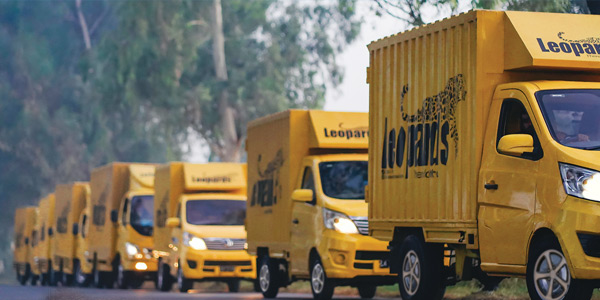



In today's contemporary world, monitoring one's courier package has evolved into an indispensable tool for both people and corporations. The need for trustworthy shipping services has increased at a rate that is proportional to the growth of both online commerce and international business. Because of their relatively low prices and high level of convenience, overland courier services are quite popular. Nonetheless, following the progress of these shipments might be difficult at times. In this piece, we will investigate how courier monitoring in overland transportation works, as well as some of the advantages that it offers.
While moving products from one area to another, overland courier services often make use of ground transportation modes of conveyance such as trucks, vans, or trains. These services are often used for shipments that are either domestic or regional, and do not need the utilisation of air or sea freight. In spite of the fact that these services may take more time than shipping choices through air or sea, they are often less expensive and provide more flexibility in terms of the hours at which collection and delivery may take place.
Keeping track of shipments while they are in route is one of the most difficult issues faced by overland courier services. With ground freight, there is no real-time tracking system that can offer updates on the position of the item and an expected arrival time as there is for air and marine freight. On the other hand, a number of organisations that offer courier services have created tracking systems that make use of either GPS or barcode scanning technology to give clients with the most recent information on their packages.
After a shipment is picked up by the courier firm, the procedure of tracking that parcel may begin. After that, a one-of-a-kind tracking number is generated for the shipment and added to the system that is used for tracking. This gives the consumer the ability to monitor the progress of the product during its entire route. Real-time information on the location of the item as well as an estimate of when it will arrive may be obtained by scanning the package or keeping its GPS coordinates up to date when it is moved from one area to another.
One of the most significant advantages of monitoring packages with a courier is enhanced openness and responsibility. Clients are able to simply track the status of their shipments and confirm that they will get to their destinations on time. In addition, tracking systems make it possible for delivery services to rapidly recognise and respond to any problems that may occur throughout the delivery process, including package delays or misplacement.
More productivity is also another advantage that comes with monitoring your courier. Courier businesses may improve their delivery routes and timetables to assure on-time delivery at the lowest possible cost if they track the movement of packages and the times they are delivered. This, in the end, results in higher levels of client satisfaction and more repeat business.
In conclusion, whether it comes to transporting products domestically or regionally, using an overland courier service is an alternative that is both cost-effective and easy. Even while keeping track of these shipments might be difficult at times, the introduction of more sophisticated tracking technologies has made the process more simpler than it was in the past. When it comes to the shipment of their items, clients that use these systems may take advantage of greater efficiency, accountability, and transparency in the process.
